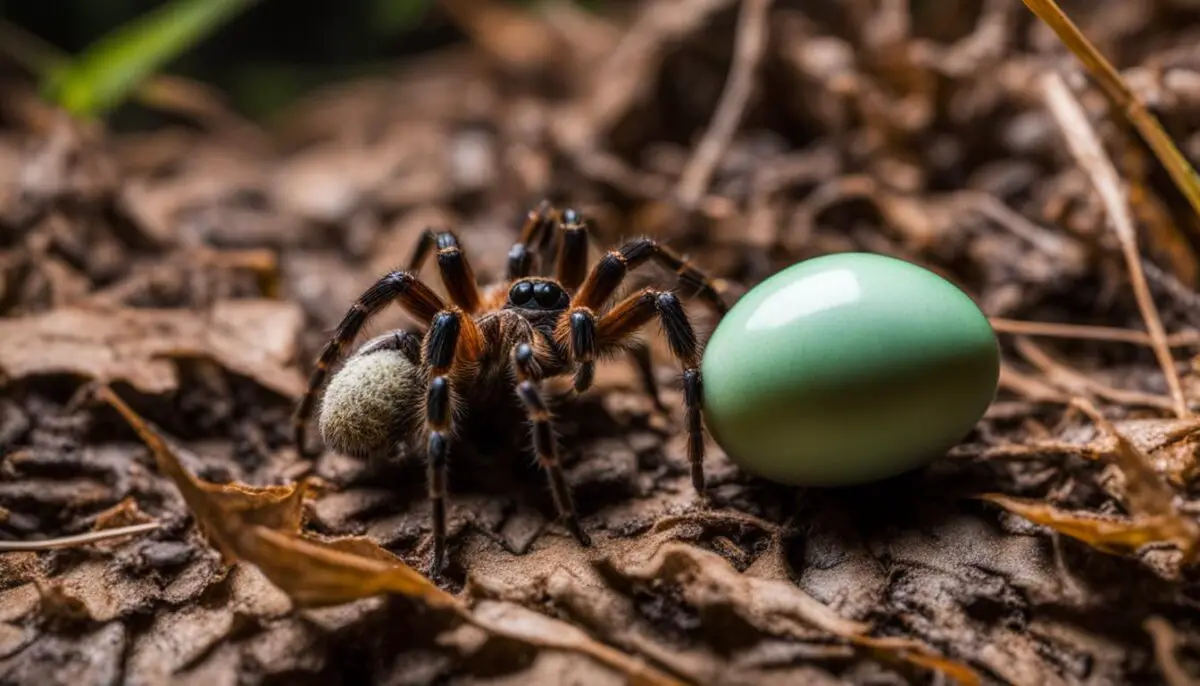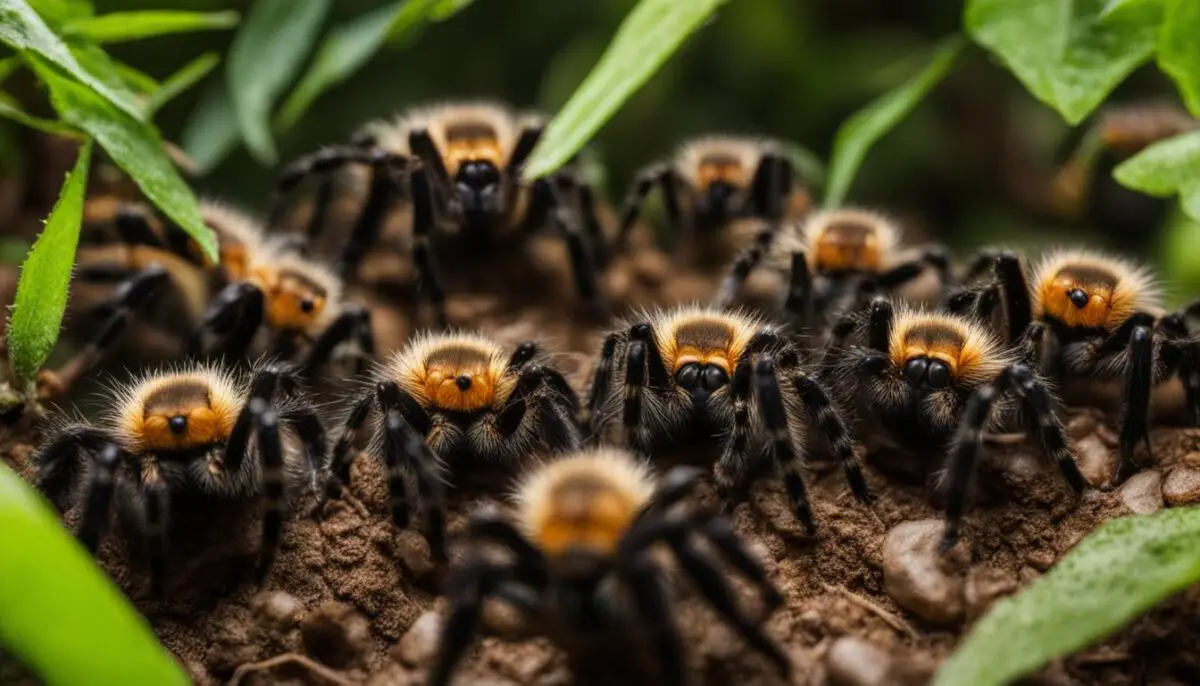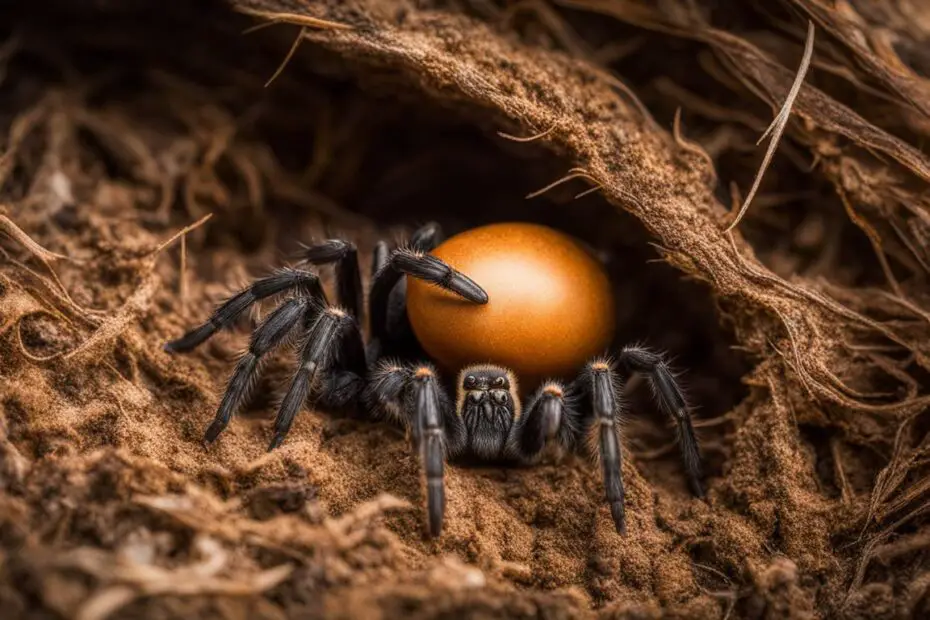Curiosity about the survival rate of tarantula babies sparked the interest of researchers, prompting a deeper exploration into their mysterious life cycle. Limited research has been conducted on human reproduction in space, highlighting the need for further investigation. While some studies suggest that reproduction can function normally in space, others have shown potential complications during labor and delivery in animal experiments. To better understand how the reproductive process is affected by conditions like lower gravity and higher radiation exposure, a biotech startup called SpaceBorn United is planning to send a mini lab to low Earth orbit for in vitro fertilization experiments. This research could provide valuable insights into the survival chances of tarantula spiderlings and potentially contribute to our understanding of human reproduction in space.
Key Takeaways:
- The survival rate of tarantula babies is a topic of curiosity and research interest.
- Limited research has been conducted on human reproduction in space, highlighting the need for further investigation.
- Conditions like lower gravity and higher radiation exposure can potentially affect the reproductive process.
- SpaceBorn United plans to send a mini lab to low Earth orbit for in vitro fertilization experiments, providing insights into tarantula spiderlings’ survival chances.
- This research could contribute to our understanding of human reproduction in space.
How Many Tarantula Babies Survive
Factors Affecting Tarantula Offspring Survival
Tarantula babies face several factors that can influence their survival rate. These factors include:
- Availability of food sources: Adequate food supply is crucial for the growth and development of tarantula spiderlings. Without access to sufficient food, their chances of survival decrease significantly.
- Suitable habitat: Tarantula offspring require a suitable environment to thrive. Factors such as temperature, humidity, and substrate play a vital role in their overall well-being and survival.
- Protection from predators: Predation is a major threat to tarantula babies. They are vulnerable to various predators, including birds, reptiles, and other insects. An absence of effective protective measures can hinder their survival.
Additionally, environmental conditions can greatly affect the survival of tarantula offspring. Temperature extremes, lack of moisture, and other adverse conditions can significantly reduce their chances of survival. how many tarantula babies survive
It is also worth noting that the health and reproductive success of parent tarantulas can impact the survival rate of their babies. Factors like genetic fitness, overall health, and successful mating can influence the viability of tarantula offspring.
Understanding these factors and their impact on tarantula offspring survival is crucial for their conservation and successful breeding programs. By creating optimal conditions, ensuring access to food sources, and implementing effective predator control measures, we can enhance the chances of survival for these fascinating creatures. tarantula offspring survival rate
Tarantula Babies Survival Statistics
Anecdotal evidence suggests that the survival rate of tarantula babies may be relatively low. While comprehensive studies on their survival statistics are limited, various factors can contribute to their mortality. Environmental conditions, such as temperature and humidity, play a crucial role in the survival of tarantula spiderlings. Predation and the availability of sufficient food sources are also significant factors that can impact their chances of survival. tarantula babies survival statistics
“The survival rate of tarantula babies can be quite challenging due to environmental factors and the vulnerability of their early life stages,” says Dr. Amanda Rodriguez, a tarantula researcher at the Institute of Arachnology. “These factors, combined with their slow growth rate and delicate nature, can result in significant mortality.”
Although tarantula breeders and conservationists employ various strategies to maximize the survival rate of tarantula babies, it remains a complex endeavor due to the inherent challenges. Providing optimal conditions, nutrition, and protection from harm are essential in increasing their chances of survival. Ongoing research and captive rearing efforts aim to enhance our understanding of the factors affecting their survival and develop effective conservation measures.
| Factors | Potential Impact |
|---|---|
| Environmental conditions (temperature, humidity) | Can affect tarantula spiderlings’ ability to regulate their body temperature and overall health |
| Predation | Poses a significant threat to tarantula spiderlings, particularly during their vulnerable early stages |
| Food availability | Inadequate food sources can result in malnutrition and decreased survival rates |
While statistical data on tarantula babies’ survival is limited, researchers continue to study and monitor their breeding success rate and mortality rate. By gaining a deeper understanding of these statistics and the factors influencing tarantula offspring survival, we can contribute to the development of effective conservation strategies and ensure the preservation of these remarkable arachnids. factors affecting tarantula offspring survival

| Stage | Description |
|---|---|
| Egg Laying and Egg Sac Creation | After mating, female tarantulas lay eggs and create protective egg sacs using silk threads. |
| Egg Development and Spiderling Emergence | The eggs develop inside the sac, and spiderlings eventually emerge, ready to start their lives. |
| Growth and Molting | Spiderlings grow and molt, shedding their exoskeletons to accommodate their increasing size. |
Understanding Tarantula Hatchling Behavior
Tarantula hatchlings exhibit fascinating behaviors that contribute to their survival in the wild. These tiny spiderlings have instinctual responses and adaptive strategies that enable them to navigate their environment and ensure their well-being.
One notable behavior displayed by tarantula hatchlings is ballooning. Some species release silk threads and allow the wind to carry them to new locations, helping them disperse and find suitable habitats. This method of transportation allows them to explore different areas, locate food sources, and potentially avoid predators.
In addition to ballooning, some tarantula spiderlings exhibit gregarious behavior, where they stay together in groups for protection. This communal living provides safety in numbers, as they can defend themselves more effectively against predators and share information about food sources and environmental hazards.
“Tarantula hatchlings display intricate behaviors that have evolved over time to ensure their survival. From ballooning to gregarious living, these fascinating creatures have developed strategies to navigate their surroundings and improve their chances of reaching adulthood.”
As tarantula hatchlings grow, they undergo molting processes to shed their exoskeleton and accommodate their increasing size. Molting is a crucial part of their growth and development, allowing them to shed old skin and emerge with a new, larger exoskeleton. This process enables them to continue their journey towards adulthood and adapt to their changing environment.
| Behavior | Description |
|---|---|
| Ballooning | Some tarantula hatchlings release silk threads and use wind currents to disperse and find new habitats. |
| Gregarious Living | Certain species of tarantula spiderlings stay together in groups, providing safety in numbers and sharing information about food and hazards. |
| Molting | Tarantula hatchlings shed their exoskeleton multiple times as they grow, accommodating their increasing size and enabling further development. |

The illegal pet trade also plays a detrimental role in the survival of tarantula offspring. This trade involves the collection and trade of wild tarantulas for the exotic pet market. Overcollection of wild tarantulas can deplete their populations, especially when coupled with habitat destruction. Removing adult tarantulas from their natural environment disrupts the delicate balance of the ecosystem and reduces the chances of successful reproduction and the survival of their babies.
In order to protect tarantula offspring and ensure their survival, it is crucial to raise awareness about the impacts of human activities. Conservation efforts should focus on habitat preservation, restoration, and the reduction of pollution. Additionally, promoting responsible pet ownership and discouraging the illegal pet trade can help safeguard the future of tarantula populations and ensure the survival of their offspring for generations to come.
Table: Impact of Human Activities on Tarantula Offspring Survival
| Human Activities | Impact on Tarantula Offspring Survival |
|---|---|
| Habitat Destruction | Reduces available space, disrupts breeding grounds, and limits access to food and shelter. |
| Pollution | Contaminates soil, water, and air, affecting tarantulas’ reproductive cycles, immune systems, and overall health. |
| Illegal Pet Trade | Depletes tarantula populations through overcollection, disrupting ecosystem balance and hindering successful reproduction. |
Future Research and Conservation Efforts
As we strive to enhance our understanding of tarantula babies’ survival, it is essential to continue conducting research that sheds light on this fascinating topic. Future studies should focus on exploring the environmental factors that significantly impact their chances of survival. By evaluating the effects of temperature, humidity, food availability, and habitat conditions, researchers can gain valuable insights into creating optimal conditions for tarantula spiderlings to thrive. Additionally, long-term observational studies can provide deeper insights into the impact of habitat restoration and conservation efforts on the survival of tarantula offspring.
A collaborative approach involving researchers, breeders, and conservation organizations is crucial for the successful conservation of tarantula species and their offspring. Sharing data, best practices, and success stories can contribute to the development of effective conservation strategies. Furthermore, the establishment of captive breeding programs can help maintain healthy tarantula populations and reduce the pressure on wild populations.
“Our goal is to better understand the factors influencing the survival of tarantula babies and translate that knowledge into conservation efforts,” says Dr. Emily Williams, a tarantula researcher at the Arachnid Conservation Institute. “By studying their behavior, reproductive cycles, and seeking ways to mitigate the negative impacts of human activities, we can work towards securing a future for these remarkable creatures.”
In addition to research and conservation efforts, raising public awareness about the importance of tarantula conservation is crucial. Educating communities about the vital role these creatures play in ecosystem balance, as well as dispelling common misconceptions about their perceived danger, can foster a greater appreciation for their existence.
| Conservation Strategies | Action Items |
|---|---|
| Protection of Natural Habitats | Implement legislation and policies to preserve tarantula habitats and prevent deforestation or habitat destruction. |
| Engagement with Local Communities | Work with local communities to raise awareness about tarantulas, their ecological importance, and the need for their protection. |
| Sustainable Pet Ownership | Encourage responsible tarantula pet ownership, including supporting captive breeding initiatives and discouraging the illegal trade of wild-caught tarantulas. |
| Public Outreach and Education | Organize educational initiatives such as workshops, seminars, and awareness campaigns to promote the conservation of tarantulas. |
By combining these research efforts, conservation initiatives, and public engagement, we can work towards securing the future of tarantulas and provide a safe environment for their babies to thrive. Together, we have the power to protect and preserve these extraordinary creatures for generations to come.

Conclusion
Understanding the survival of tarantula babies is crucial for their conservation and the preservation of their species. While statistical data on tarantula offspring survival is limited, ongoing research and conservation efforts aim to improve their chances of survival. By studying their behavior, reproductive cycles, and the impacts of human activities, we can contribute to the understanding and protection of these fascinating creatures.
Factors such as suitable habitat, food availability, and protection from predators play a significant role in the survival of tarantula babies. Additionally, the health and reproductive success of parent tarantulas influence the survival rate of their offspring. Continued research on these factors can help us create optimal conditions for breeding and ensure the successful conservation of tarantulas.
Conservation efforts and responsible practices are vital to the survival and well-being of tarantula babies. Protecting their natural habitats, restoring ecosystems, and combating the illegal pet trade are essential steps in preserving their populations. By working together, researchers, breeders, and conservation organizations can ensure the future survival and reproductive success of tarantulas, safeguarding these incredible creatures for generations to come.
FAQ
Is there any data on the survival rate of tarantula babies?
Comprehensive studies on the survival rate of tarantula babies are limited, making statistical data scarce. However, anecdotal evidence suggests that a significant number of tarantula spiderlings may not survive to adulthood.
What factors can impact the survival of tarantula offspring?
The survival of tarantula offspring can be influenced by various factors, including the availability of food sources, suitable habitat, protection from predators, temperature, humidity, and the health and reproductive success of the parent tarantulas.
What is the reproductive success of tarantulas dependent on?
The reproductive success of tarantulas depends on factors such as the age and health of the tarantulas, their ability to find suitable mates, successful fertilization of eggs, availability of food, and favorable environmental conditions.
What are the stages of the tarantula life cycle?
The life cycle of tarantulas consists of several distinct stages, including mating, egg laying, development of eggs, emergence of spiderlings from egg sacs, molting processes, and growth into adult tarantulas. The duration of each stage and the number of molts can vary depending on the tarantula species.
What behaviors do tarantula hatchlings exhibit?
Tarantula hatchlings exhibit behaviors such as dispersing from the egg sac to seek shelter and food, engaging in ballooning (releasing silk threads to be carried by the wind to new locations), and staying together in groups for protection. They also undergo molting processes to shed their exoskeleton and accommodate their increasing size.
How do human activities affect the survival of tarantula offspring?
Habitat destruction, pollution, climate change, and the illegal pet trade can all have detrimental effects on the survival of tarantula offspring. These activities disrupt their natural ecosystems, reduce food sources, and deplete their populations.
What are future research and conservation efforts focused on?
Future research and conservation efforts aim to further understand the survival factors for tarantula babies. Long-term studies on environmental factors, impacts of habitat restoration, and conservation initiatives are essential to protecting tarantula species and their offspring.
